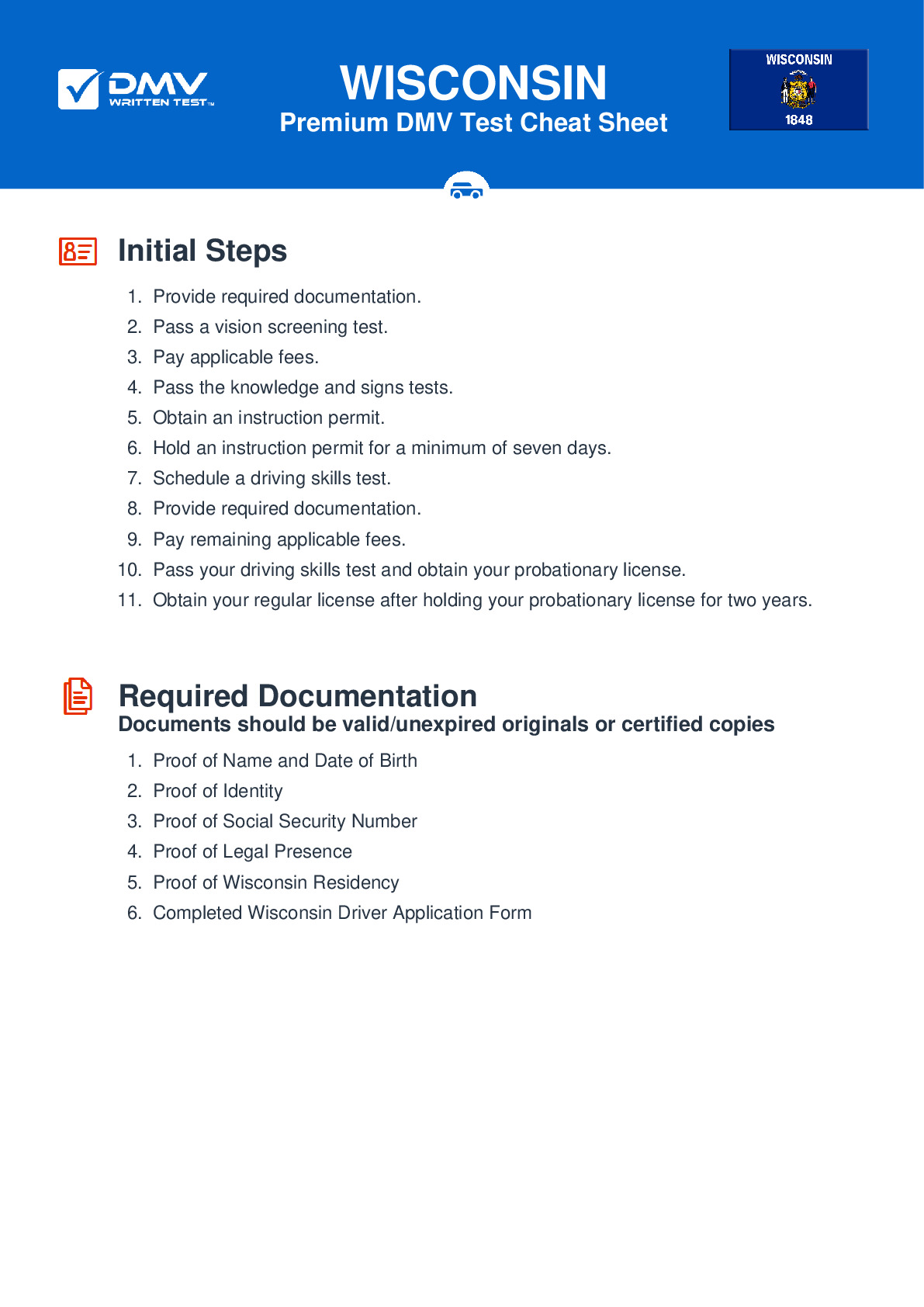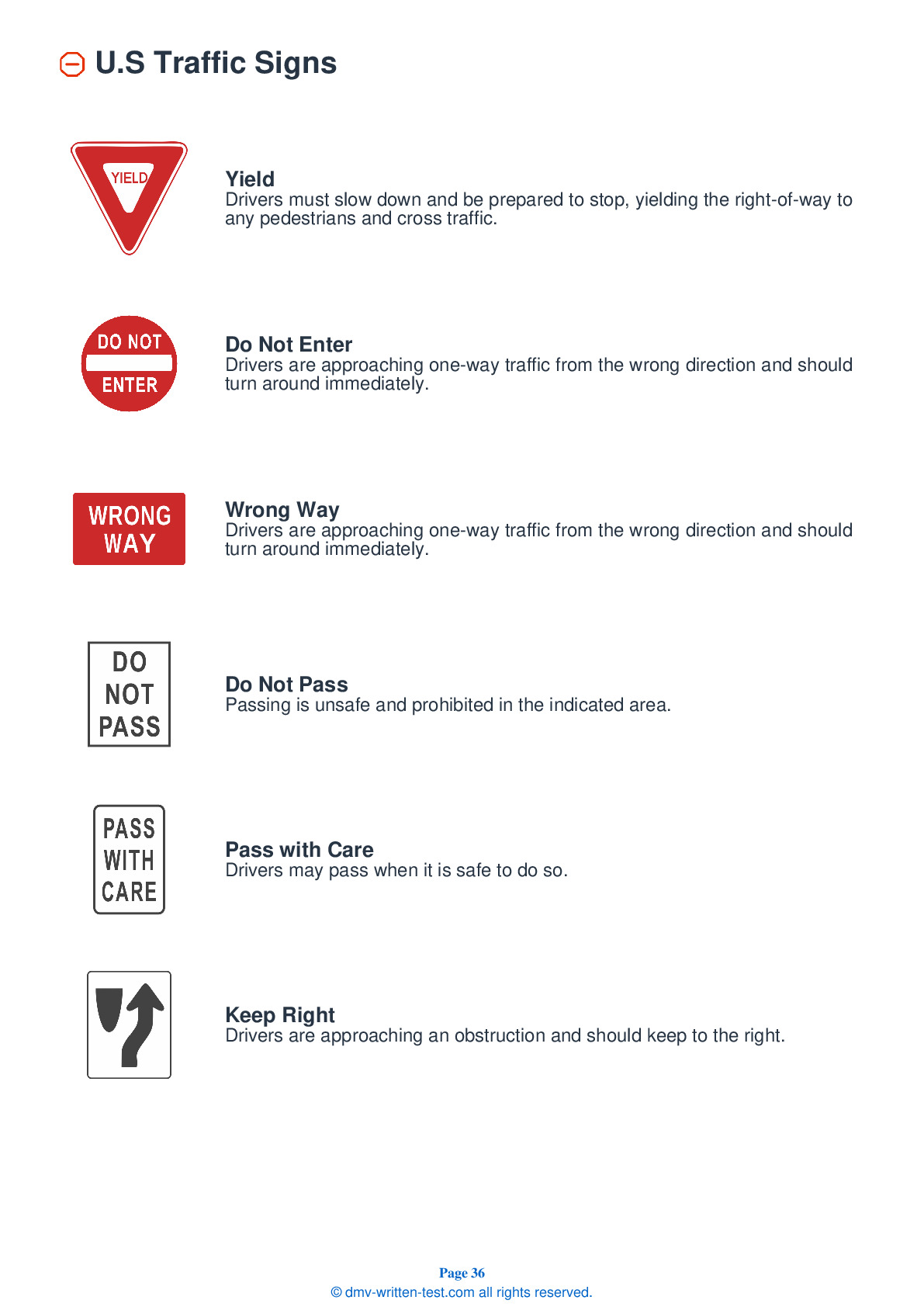2025 Wisconsin Permit Test 6
The following questions are from real DMV written tests. These are some of the actual permit questions you will face in Wisconsin. Each permit practice test question has three answer choices. Select one answer for each question and select "grade this section." You can find this button at the bottom of the drivers license quiz. For a complete list of questions and answers for Wisconsin please visit https://cheat-sheets.dmv-written-test.com/en/wisconsin/car.
Number of Tests
Number of Question
Passing Score
43. You must yield for emergency vehicles:
Explanation
You must yield the right-of-way to any emergency vehicle that is using its siren or flashing lights.
44. If weather or light conditions require you to have your lights on while driving:
Explanation
Use your low beam headlights when driving in foggy, snowy, or rainy conditions. Light from high beam headlights will reflect back, causing glare and making it even more difficult to see ahead.
45. If you are turning onto a street with more than one lane traveling in your direction, you should:
Explanation
When turning onto a street with more than one lane moving in the direction that you are traveling, turn into the lane that is closest to your previous lane. Do not change lanes when turning.
46. Where is it safe to pass another vehicle?
Explanation
Never pass within intersections or at other intersecting points, such as parking lot entrances and alleyways. Any time your view is blocked by a curve or a hill, you should stay in your lane and assume that there is an oncoming vehicle just out of sight. Wherever signs and/or pavement markings permit passing other vehicles, you will have to determine whether or not you have enough space to pass in a safe manner.
47. The amount of alcohol in the blood is referred to as:
Explanation
Blood alcohol concentration (BAC) is a measurement of the percentage of alcohol in the blood. The higher the BAC number, the more impaired a person is.
48. Driving at night requires increased caution because:
Explanation
Because it is dark, drivers cannot see as well at night as they can during the day. From one half hour after sunset until one half hour before sunrise, or at any other time when persons or vehicles are not visible for 500 feet, drivers must use their headlights.
49. If bad weather makes it difficult for you to see clearly, you should:
Explanation
When it is difficult to see due to darkness or poor weather, increase your following distance. This will give you more time to react to hazards that you may not see in advance.
50. Remove all snow, frost, and ice from:
Explanation




